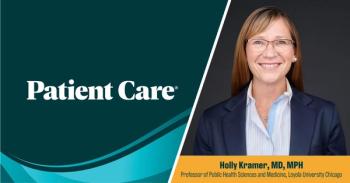
Endocrine Society Releases New Clinical Guideline on Vitamin D Supplementation for Prevention of Disease
ENDO 2024. The expert panel suggests children, pregnant persons, adults aged ≥75 years, and adults with prediabetes consume more vitamin D than the recommended daily allowance.
A new guideline issued by the Endocrine Society recommends children, pregnant persons, adults aged 75 years and older, and adults with high-risk prediabetes should consume more
The new clinical practice guideline was presented at ENDO 2024, the Endocrine Society’s annual meeting, held June 1-4 in Boston, Massachusetts, and was simultaneously published online in The Journal of Clinical Endocrinology & Metabolism.1
“The goal of this guideline was to address the vitamin D requirements for disease prevention in a generally healthy population with no underlying conditions that would put them at risk of impaired vitamin D absorption or action,” Marie Demay, MD, professor of medicine, Department of Medicine, endocrine unit, Massachusetts General Hospital and Harvard Medical School, Boston, MA, and chair of the panel that wrote the guideline, said in a press release. “Healthy populations who may benefit from higher dose vitamin D supplements are those 75 and older, pregnant people, adults with
According to Demay and colleagues, although serum concentrations of 25-hydroxyvitamin D (25[OH]D) have been associated with various common disorders (eg, musculoskeletal, cardiovascular,
To establish clinical guidelines for the use of vitamin D to lower the risk of disease in healthy persons without established indications for vitamin D treatment or 25(OH)D testing, the multidisciplinary panel of experts “identified and prioritized 14 clinically relevant questions related to the use of vitamin D and 25(OH)D testing to lower the risk of disease,” they wrote. They also prioritized randomized placebo-controlled studies in general populations, as well as in in individuals with select conditions (eg, pregnancy, prediabetes), that examined the effects of empiric vitamin D supplementation across the lifespan.1
Empiric supplementation was defined as vitamin D consumption that exceeded the IOM’s Dietary Reference Intakes (DRIs) and was implemented without testing for 25(OH)D.“Due to the scarcity of natural food sources rich in vitamin D, empiric supplementation can be achieved through a combination of fortified foods and supplements that contain vitamin D,” the panel noted.1
The panel suggested empiric vitamin D supplementation for the following populations due to the potential to reduce specific health risks1:
- In children and adolescents aged 1 to 18 years: Prevent nutritional rickets and possibly reduce the risk of respiratory tract infections.
- In persons aged 75 years and older: Lower the risk of mortality.
- Pregnant individuals: Reduce the risk of preeclampsia, intrauterine mortality, preterm birth, small-for-gestational age birth, and neonatal mortality.
- Persons with high-risk prediabetes: Reduce progression to diabetes.
In healthy individuals aged less than 75 years, the panel advised against empiric vitamin D supplementation, and instead recommended that they follow the IOM’s recommended daily allowance of 600 IU (15 μg). In adults aged 50 years and older with indications for vitamin D supplementation or treatment, the panel suggested daily, lower-dose vitamin D instead of intermittent use of high doses.1
Also, the panel suggested against routine 25(OH)D testing in any of the populations studied because “no clinical trial evidence was found to support routine screening for 25(OH)D in the general population, nor in those with obesity or dark complexion, and there was no clear evidence defining the optimal target level of 25(OH)D required for disease prevention in the populations considered.”1
Demay and colleagues noted limitations in the studies they evaluated, including a paucity of research on the efficacy and safety of vitamin D supplementation in individuals with low baseline 25(OH)D levels. Also, many of the trials were deemed to be of insufficient duration to properly examine the effect of vitamin D supplementation on some outcomes and the studies included in the analysis had populations with 25(OH)D levels that most would consider adequate to begin with.1
“These recommendations are not meant to replace the current DRIs for vitamin D, nor do they apply to people with established indications for vitamin D treatment or 25(OH)D testing,” the panel concluded. “Further research is needed to determine optimal 25(OH)D levels for specific health benefits.”1
References:
- Demay MB, Pittas AG, Bikle DD, et al.
Vitamin D for the prevention of disease: An Endocrine Society clinical practice guideline. J Clin Endocrinol Metab. Published online June 3, 2024. doi:10.1210/clinem/dgae290 - Endocrine Society Guideline recommends healthy adults under the age of 75 take the recommended daily allowance of vitamin D. News release. Endocrine Society. June 3, 2024. Accessed June 3, 2024.
https://www.endocrine.org/news-and-advocacy/news-room/2024/endocrine-society-recommends-healthy-adults-take-the-recommended-daily-allowance-of-vitamin-d
Newsletter
Enhance your clinical practice with the Patient Care newsletter, offering the latest evidence-based guidelines, diagnostic insights, and treatment strategies for primary care physicians.



























































































































































































































































































































